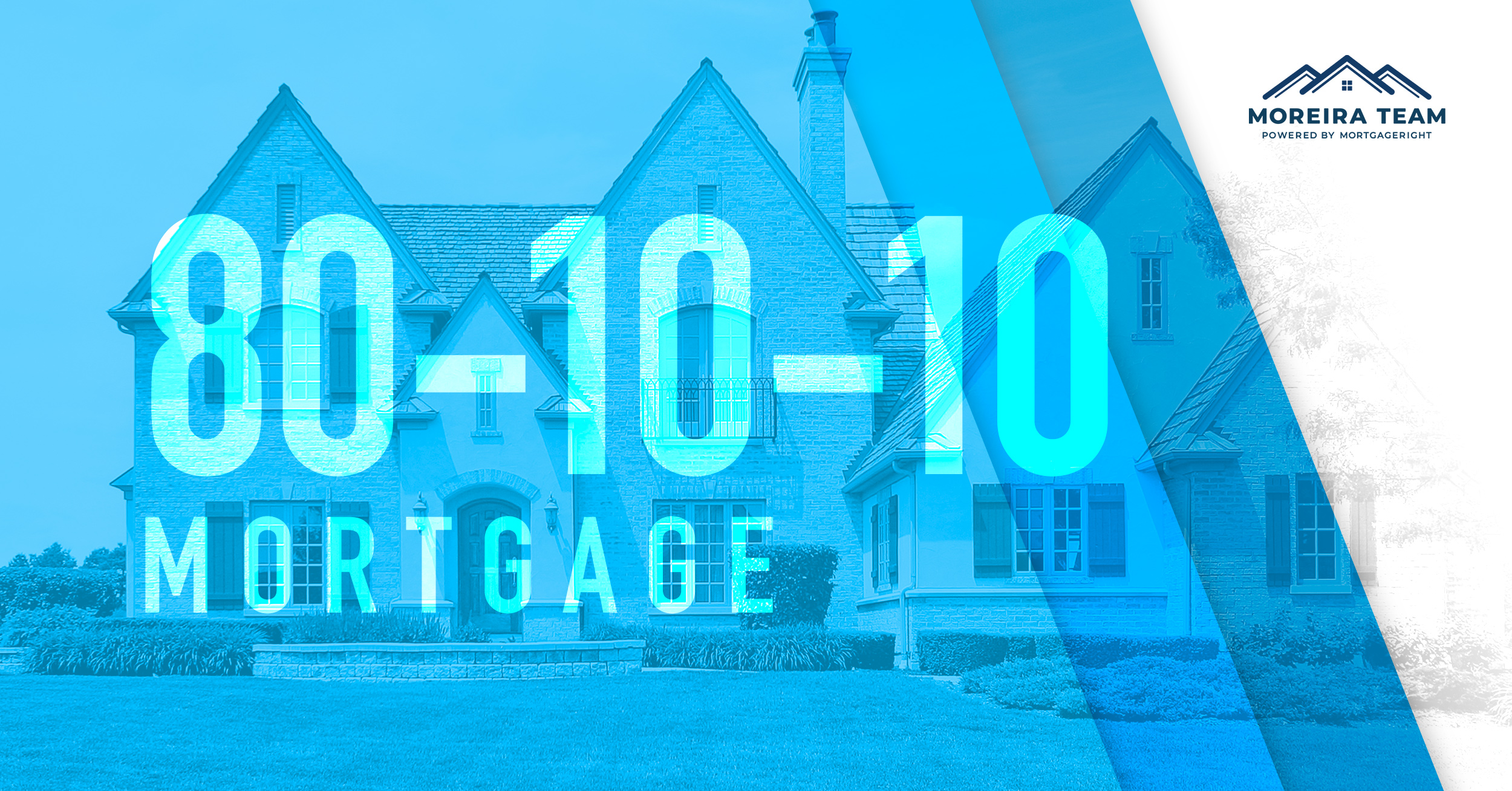
In this article
A mortgage that allows for the use of two loans to make up 90% of the total price is an 80-10-10 mortgage. A down payment of 10% makes up the final percentage and helps buyers avoid using a jumbo loan or PMI.
This article will go into detail about:
- The concept of a 80-10-10 loan
- The steps to obtaining a 80-10-10 loan
- Using 80-10-10 loans to avoid mortgage insurance
- Using 80-10-10 loans to replace jumbo mortgages
- The advantages and disadvantages of 80-10-10 loans
- Piggyback loan history
A 10% down payment, combined with a combination of two mortgages to reach 90% of a purchase price is what forms a 80-10-10 loan. The reasons why someone would get an 80-10-10 loan are generally for buying a home before the sale of another is made, to avoid dealing with private mortgage insurance, or to get around jumbo loan requirements. Piggyback loans are a common term that is used to refer to 80-10-10 mortgages.
The Concept of a 80-10-10 Loan
A down payment and two mortgages are the basis of an 80-10-10 loan. The 80 stands for the primary mortgage at 80% of the home price. The first 10 is the secondary loan at 10% of the home price. The last 10 is the 10% down payment.
Two mortgages and the down payment are the 80-10-10 loan:
- Primary Mortgage: 80% of the price of the home
- Secondary Mortgage: 10% of the price of the home
- Down Payment: Another 10% of the price of the home
The most common version of this loan is 80-10-10, but other options exist that alter the loans. Condominium purchases are one of the most common reasons that a different combination may be used. In these cases, 75-15-10 loans are often used. This combination results in 75% of the condo’s price being used, which causes the buyer to have mortgage rates that are lower.
The Steps to Obtaining A 80-10-10 Loan
Both the primary mortgage and the secondary mortgage have to be applied for in order to obtain an 80-10-10 mortgage. Separate lenders may be needed for each loan in some instances. In these cases, the primary mortgage loan officer can provide referrals for a secondary loan mortgage lender while you apply for the primary mortgage. Financial document gathering, application filing, and closings must be done for each of the loans that will be applied to for the 80-10-10 mortgage. The loan that takes 80% of the home’s price into account will be a conventional loan, while the 10% price loan will be a line of credit or equity loan.
Using 80-10-10 Loans to Avoid Mortgage Insurance
When the loan is over 80% of the cost of the home, lenders require that borrowers have some kind of private mortgage insurance. This can be avoided with the use of the 80-10-10 loan. Since the primary loan is 80% or less than the price of the home, a legal loophole is exercised to bypass the mortgage lending rules. The down payment amount of 10% and the secondary mortgage 10% further cement the ability to bypass the lending rules.
An 80-10-10 loan can carry a lower cost than a normal loan with mortgage insurance attached for people with favorable credit scores, usually in the area of 740 or more. HELOC, or home equity line of credit, is usually the type of secondary mortgage for the loan, and it is interest only. In cases where the credit score is lower than 740, there is less of a cost advantage, and it only gets lower as the score goes lower. Those with lower credit scores are charged with higher interest rates.
Using 80-10-10 Loans to Replace Jumbo Mortgages
When expensive homes are being purchased, jumbo mortgages may be used, but they often come with strict lending requirements that make them unattractive for borrowers. Larger cash reserves than normal mortgages are often needed, along with higher down payments and higher credit scores. Rather than conforming to these requirements, buyers turn to 80-10-10 mortgages as a replacement.
According to current lending guidelines, the jumbo loan requirements can be overcome in two ways:
- Opt for the 80-10-10 loan that has standard that aren’t as strict as the jumbo mortgage standards, and allows for an amount that is less than the conforming limit. A home that costs around $550,000 would result in a conforming loan of $440,000, with a HELOC of $55,000 and a down payment of $55,000.
- High interest rates are often charged for borrowers when less than 20% is put into a down payment for jumbo loans, so an 80-10-10 would allow for a more favorable option on the down payment. The interest rate on the primary mortgage would be better, and it may be possible to get 5% on a down payment and 15% on the HELOC if they have less money for the down.
Like all loans, 80-10-10 loans have their own set of advantages and disadvantages that can make them more or less favorable to borrowers.
Advantages:
- A Bigger Loan Can Be Obtained. You have more purchasing abilities because there more options for home sizes with these loans. Using them, you can obtain more expensive and larger homes that wouldn’t be possible with other loans.
- The Monthly Payment Is Lower. The cost of the loans each month will be lower because of the absence of private mortgage insurance. Even when taking the cost of the secondary loan into account, it’s still lower.
- Down Payment Cost Is Lower. The low down payment will make it possible for your mortgage terms will be excellent and you can afford a nice home.
- Deductions From Taxes. Up to $100,000 of the secondary loan’s interest can be deducted from your taxes.
Disadvantages:
- A Reliance On Good Credit. The approval of this type of loan hinges on the borrower having good credit.
- Interest Rates Can Be High. The interest rate for the HELOC will be higher. You have to compare the monthly payment to a PMI and see if it’s still lower.
- The Fees And Closing Costs Can Add Up. There will be double the amount of fees and closing costs for you to pay on the loans, making the upfront cost higher than expected.
- Limits On Tax Benefits. There is a $100,000 limit on tax deductions for the second loan’s interest, which means that cost effectiveness may be absent in larger loans. PMI payments may be deductible depending on your income, which may make traditional loans with a PMI a better option for you.

